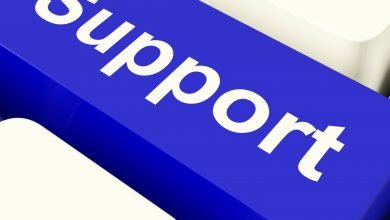
Line of credit: what is it and how does it work?
Line of credit: what is it and how does it work?
A line of credit gives you access to money “on-demand” with which you can pay for some expenses,
such as a home project or unexpected maintenance for your car.
Lines of credit are almost always offered by lenders like banks or credit unions, and if you qualify,
you can draw up to a maximum amount over a set period of time.
You will have to pay the interest only when you apply for a loan from the line of credit.
Once you repay the borrowed funds, that amount will be available again to claim.
The key is flexibility: you can choose when to withdraw the money,
return it and repeat the transaction, as long as you meet the conditions, which include paying on time and in full.
Read on to learn how a line of credit works and when it might be a good option for you.
How does a line of credit work?
Let’s start by talking about your options when you want to borrow money.
Generally, you can choose to apply for a loan or a line of credit.
With a loan, you get a whole sum of money and start paying interest right away, no matter when you use it.
Instead, a line of credit gives you access to a fixed amount of money that
you can borrow whenever you need without paying any interest until you actually borrow money.
There are business lines of credit, but this time we will look at lines of credit for personal use.
These are its main characteristics:
- Personal lines of credit are generally unsecured, meaning you don’t have to offer any assets in exchange to get it.A secured line of credit, on the other hand, is backed by an asset, like your home or savings account.
- When you apply for a line of credit, having good credit scores may help you qualify for a lower annual percentage rate (APR).But keep in mind that some lines of credit may charge you fees (such as annuities), as well as limit the amount of money you can borrow.
- Once you qualify for the line of credit, you’ll have a set period of time—known as a “withdrawal period”—duringwhich you can withdraw money from the account. A withdrawal period can last for several years.
- When you’re ready to borrow money, the bank can provide you with special checks,a card, or transfer the money to your bank account.
- Once you borrow money from your line of credit, interest will begin to accrue and you’ll need to begin making at least the minimum payments, which will be added back to your available line of credit as you make them.
- Once your withdrawal period ends, you will begin an amortization period where you will have a set time to pay off any remaining balance.
Things to keep in mind: Making only the minimum payments can cost you more in interest in the long run.
How can a line of credit affect my credit scores?
As part of the line of the credit application process, the lender may perform a hard check on your credit reports,
which could temporarily drop a few points on your credit score.
Once the line of credit is approved and accepted, it usually appears on your credit reports as a new account.
If you never use your available credit or only use a small percentage of the total amount available,
you can lower your credit utilization rate and improve your credit scores.
Your utilization rate represents the amount of available credit you are using at any given time.
Borrowing a high percentage of your line of credit could increase your utilization rate, which can hurt your credit score.
Your credit health can be affected if you make late payments.
A secured line of credit
If you’re looking to take out a secured line of credit, a good option is a home equity line of credit (HELOC).
HELOCs allow you to borrow against the equity in your home and use it as an asset in exchange for a line of credit.
They almost always come with a variable interest rate, which means your payments can increase over time.
The bank generally limits the amount you can borrow to 85% of your home’s appraised value minus the remaining balance on your first mortgage.
When banks set the interest rate, factors other than your credit score come into play, such as your credit history and income.
If you don’t own a home or don’t want to use your home as collateral,
you have the option of taking out a secured line of credit backed by a savings account or certificate of deposit.
An unsecured line of credit
With an unsecured line of credit, you don’t risk losing your home or savings if you miss payments.
However, since the lender takes on more risk by making unsecured loans,
that could lead to higher interest rates compared to a secured line of credit.
Each unsecured line of credit comes with its own terms,
which can include limits from a few thousand to hundreds of thousands of dollars.
Some lines of credit come with fees — for example, you may be charged an annuity just to keep the account open.



